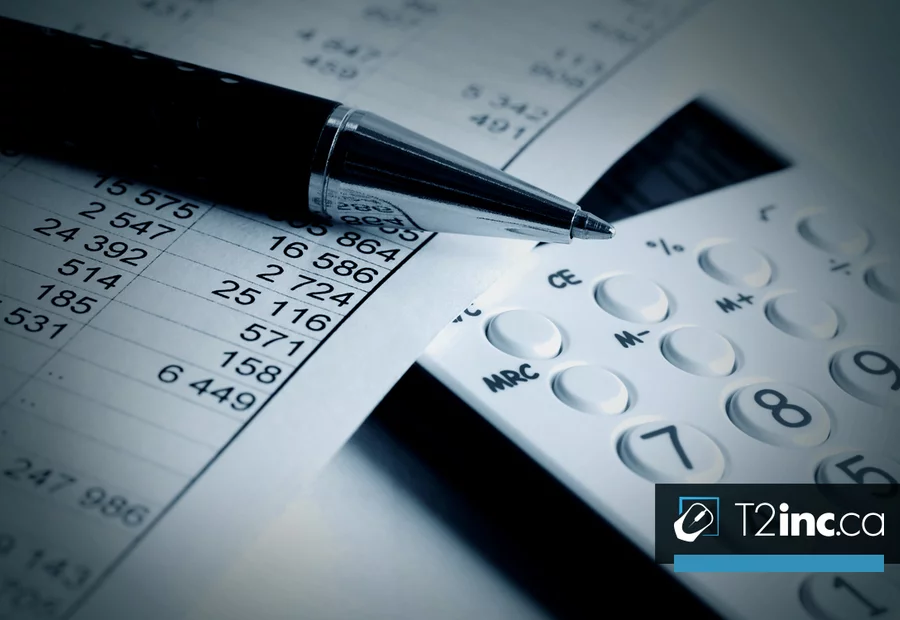What do you need to know about the Scientific Research and Experimental Development (SR&ED) tax credit in Canada?

Is your business investing in innovation, product development, or technological improvement? The Scientific Research and Experimental Development (SR&ED) tax credit is one of Canada’s most valuable tax incentive programs for companies engaged in R&D. It can help you recover a significant portion of your eligible expenditures, either as a tax refund or a deduction against income tax.
Administered by the Canada Revenue Agency (CRA), the SR&ED program supports companies that conduct scientific research or experimental development in Canada. Whether you're developing a new product, improving a manufacturing process, or solving a technological challenge through systematic investigation or analysis, your business could qualify for this incentive, even if it isn't yet profitable.
In this guide, you'll learn what the SR&ED tax credit is, how it works, who qualifies, and how to calculate your claim. We’ll also share practical tips to help you prepare your application and avoid common mistakes.
What is the SR&ED tax credit in Canada? Definition and key objectives
The Scientific Research and Experimental Development (SR&ED) tax credit is a federal tax incentive program that helps Canadian businesses offset the cost of innovation. It allows companies to recover a portion of their eligible SR&ED expenditures, such as salaries, materials, and subcontracting, through either a refundable or non-refundable tax credit.
Administered by the Canada Revenue Agency (CRA) under the Income Tax Act, the SR&ED program supports scientific or technological research and development work that aims to overcome uncertainty through a systematic investigation or search. Eligible projects may include the creation of new products or processes, or significant improvements to existing ones, especially when these involve scientific research or experimental development carried out in Canada.
Refundable or non-refundable tax credit
The SR&ED tax credit can be refundable or non-refundable, depending on your company’s structure, size, and tax status.
If your business qualifies as a Canadian-controlled private corporation (CCPC) and remains below certain thresholds for taxable income and taxable capital, as defined by the Canada Revenue Agency (CRA), you may be eligible for a refundable tax credit. This means your company can receive a direct cash refund, even if no corporate income tax is owed for the year. It’s a significant benefit, especially for startups or pre-revenue R&D companies.
However, if your company exceeds these limits, such as having high revenues, foreign ownership, or operating as a public or holding corporation, the SR&ED incentive becomes non-refundable. In this case, the credit can only be used to reduce your income tax liability, or it may be carried forward to future tax years.
Understanding the difference between refundable and non-refundable investment tax credits is essential when planning your SR&ED claim and forecasting your company’s cash flow.
What are the advantages of the SR&ED tax credit?
The SR&ED program offers exceptional tax leverage to finance your innovation efforts. It can represent tens of thousands of dollars in tax refunds or reductions, even if your company is not yet profitable.
This federal tax incentive can amount to tens or even hundreds of thousands of dollars, allowing Canadian corporations, especially SMEs and startups, to reinvest in innovation and fuel growth.
Here are three key benefits of the SR&ED tax credit:
- Lower corporate tax liability: whether refundable or non-refundable, the SR&ED credit enables your company to reduce its tax liability or obtain a cash refund on a portion of the expenses incurred in research and development.
- Increased innovation capacity: the SR&ED program reduces the financial risk associated with experimental projects. You can prototype, iterate, fail and try again... without jeopardizing your cash flow.
- Strategic competitive edge: by investing more in technological development, you improve your offering, accelerate your growth, which can put you ahead of your competitors.
Is your company eligible for the SR&ED tax credit?
Before you consider applying for an SR&ED tax credit, it's important to ensure that your company meets the key eligibility requirements. The good news is that many Canadian SMEs—especially those conducting research and development (R&D) in Canada, qualify without even realizing it.
Here are the three basic criteria to qualify for the SR&ED tax incentive:
1. Your business is incorporated and taxed in Canada: the SR&ED program is a federal tax credit program open to corporations incorporated in Canada and filing a T2 corporate income tax return. This includes start-ups, established SMEs, and even some holding companies, as long as they conduct SR&ED work or support eligible innovation activities. Your company must be carrying out SR&ED in Canada, in a field of science or technology, and for business purposes governed by the Income Tax Act.
2. You're conducting eligible scientific or experimental activities: the CRA’s definition of SR&ED goes beyond product design or standard engineering. Eligible activities must involve scientific research or experimental development aimed at overcoming a technological uncertainty, using a systematic investigation or search. Examples of eligible SR&ED activities include:
- Prototype development involving new or improved material;
- Process improvements through means of experiment or analysis;
- Creation of software requiring scientific or technological advancements.
This type of work must follow the principles of basic or applied research, and align with the CRA's information circular and Form T661 guide. Functional enhancements or commercial tweaks alone don’t qualify. Projects must aim to advance scientific knowledge with a specific application or address technical uncertainties.
3. You have incurred eligible expenses: to claim the credit, you must track and document all qualifying SR&ED expenditures. The following costs are generally accepted:
- Salaries for technical employees (e.g., engineers, developers);
- Materials consumed or transformed during experimentation;
- Scientific subcontracting or testing and psychological research related to the project;
- Certain indirect expenditures like utilities or equipment maintenance.
The CRA may reject your claim if you lack proper documentation, regardless of how valid the activity may be. Keep detailed technical logs, timesheets, and invoices to support your SR&ED claim.
Tips for planning your claim to the federal SR&ED program
The SR&ED tax credit can provide substantial financial support for your company, either as a refundable credit or a reduction in income tax. But to fully benefit from this tax incentive program, your claim must be carefully planned and supported with solid documentation.
Even if your project meets the SR&ED eligibility requirements, your claim could be denied, or significantly reduced, if the information is incomplete, poorly categorized, or misaligned with the CRA’s criteria.
Here are our key tips to maximize your chances of success:
1. Think SR&ED from the project’s inception: as soon as a project involves a technical or scientific uncertainty, ask yourself: “Could this qualify for the SR&ED tax credit?” This early-stage awareness helps you properly track activities, staff time, and technical documentation throughout the development process.
2. Clearly identify eligible activities: not every task linked to your project will qualify. Focus on the core SR&ED activities, such as:
- Phases of experimentation, prototyping, or systematic investigation;
- Work aimed at overcoming technological limitations;
- Documented iterations, failed trials, and lessons learned.
An SR&ED expert can help determine which activities qualify under the definition of scientific research and experimental development.
3. Organize your technical and financial documentation: thorough documentation is the foundation of any strong claim. Be sure to prepare:
- A technical log (with tests, hypotheses, and results);
- Timesheets for employees assigned to SR&ED work;
- Invoices, contracts, and supporting documents.
The more detailed and consistent your records, the easier it is to prove that your SR&ED expenditures meet the CRA’s expectations.
4. Prepare your claim carefully: the CRA requires all SR&ED claims to be submitted using Form T661, which demands:
- A precise description of your SR&ED projects and objectives;
- A breakdown of qualified expenditures by project;
- Clear connections between your R&D and your company’s innovation goals.
Incomplete or poorly written forms are one of the most common reasons for claim rejection or adjustment.
5. Consider tax strategy and corporate structure: in some cases, adjusting your company’s legal or fiscal setup, such as becoming a Canadian-controlled private corporation (CCPC) or setting up a subsidiary dedicated to R&D, can:
- Increase your access to refundable tax credits;
- Improve the way your SR&ED expenditures are reported;
- Create room for capital expenditures to become eligible in future tax years.
How is the Scientific Research and Experimental Development (SR&ED) tax credit calculated?
The federal SR&ED tax credit is based on the qualified expenditures your company incurs while conducting eligible research and development (R&D) activities. These SR&ED expenditures may include salaries, materials and certain subcontracting costs.
For most Canadian small and medium-sized businesses that qualify as Canadian-controlled private corporations (CCPCs), the federal SR&ED tax incentive offers a credit of up to 35% on the first $3 million in eligible expenses. Beyond this threshold, a 15% basic non-refundable credit applies.
In addition, provincial tax credits may also apply, such as the SR&ED credit in Quebec, the SR&ED credit in Ontario or the SR&ED credit in British Columbia. Each province applies its own rules, rates, and annual limits, but they are generally calculated based on the same R&D expenditure base used at the federal level.
Example – Calculating an SR&ED tax credit
Let's take a practical example to illustrate the calculation:
| Type of expense | Amount |
| R&D employee salaries | $100,000 |
| Materials consumed | $30,000 |
| Total eligible expenses | $130,000 |
If the company qualifies for a 35% refundable credit at the federal level, the total federal SR&ED tax credit would be:
$130,000 × 35% = $45,500
This example only reflects the federal portion. Depending on where the work was carried out in Canada, additional provincial tax incentives could significantly increase the total SR&ED refund or tax reduction.
Frequently asked questions about the SR&ED tax credit
💬 What’s the difference between the federal and provincial SR&ED tax credits?
The federal SR&ED tax credit applies throughout Canada and is administered by the Canada Revenue Agency (CRA). In contrast, provincial SR&ED tax incentives have their own tax rates, eligibility criteria, and expenditure ceilings. In many cases, businesses can combine both federal and provincial credits, significantly increasing the overall tax benefit.
💬 Can I claim the SR&ED credit if my business has no income yet?
Yes. If your company qualifies for a refundable SR&ED credit, you may receive a cash refund, even if you don’t owe any taxes. This is particularly relevant for start-ups and early-stage SMEs that meet the criteria of a Canadian-controlled private corporation (CCPC).
💬 Do I need to file an SR&ED claim every year?
Yes. You must submit a claim each tax year, for every eligible project. Even if the same project spans multiple fiscal periods, you’ll need to file a new Form T661 and supporting documentation annually to remain eligible.
💬 Can I apply for the SR&ED tax credit retroactively?
Yes, but there’s a strict deadline. You must file your claim within 18 months after the end of the relevant tax year. If you miss this window, you forfeit the opportunity to claim the credit for that year, even if the project and expenses were eligible.
Conclusion
The Scientific Research and Experimental Development (SR&ED) tax credit is far more than a simple tax incentive. It’s a powerful tool to help your business innovate, reduce costs, and accelerate growth.
By fully understanding the eligibility requirements, organizing your SR&ED activities and expenditures with precision, and calculating your claim accurately, you significantly improve your chances of receiving the maximum benefit from this government program.
At T2inc.ca, we ensure your SR&ED tax credits are correctly integrated into your corporate income tax return and fully compliant with CRA guidelines. And if you need expert support to prepare your T661 form or document your claim, we can connect you with trusted partners specialized in SR&ED consulting.
- What is the SR&ED tax credit in Canada? Definition and key objectives
- What are the advantages of the SR&ED tax credit?
- Is your company eligible for the SR&ED tax credit?
- Tips for planning your claim to the federal SR&ED program
- How is the Scientific Research and Experimental Development (SR&ED) tax credit calculated?
- Frequently asked questions about the SR&ED tax credit
- Conclusion
Contact our experts
Have a question? Need help? Fill out our online form to get help from our experts.
Contact usNeed more help?
Contact us by filling out our form
Are you interested in our services, but would like more information before taking the plunge? Contact us today and one of our tax accountants will be in touch to help you.
At T2inc.ca, we're committed to helping business owners manage their company's tax affairs so they can grow their business.




